‘Tax Scam Records’: Artist discovers albums of his songs were released by shadowy companies in 1977

“Tax Scam Records” is a phrase that was coined by collectors to identify albums that are believed to have been manufactured for the sole purpose of—get this—losing money. From around 1976 until 1984, a number of record labels were established as tax shelters, with investors putting their money into albums. A financier would invest, say, $20,000 in an LP, and if it tanked, the backer could claim a loss on their taxes, based on the assessed value of the master recording. Technically, the practice was legal, but to maximize the write-off, the appraisal was often grossly inflated—as high as seven figures.
The I.R.S would come to question the legitimacy of some of these labels, and accuse those promoting shelters that focused on tax benefits—rather than the music being bankrolled—of perpetuating fraud.
Anything was seemingly fair game for a tax shelter album, including LPs previously issued as private press records, demo tapes by aspiring artists, and studio outtakes by name acts. Some labels were so brazen, they released albums using material by groups as big as Led Zeppelin and the Beatles.

Album of Beatles Christmas messages, 1981
Another issue that caught the attention of the I.R.S., was how little to no money was put into marketing these releases. Over time, collectors came to realize that relatively few copies of individual tax shelter albums had made it into stores. It’s believed that most of the LPs went directly to a warehouse or were simply destroyed. Many of these records are so scarce that only a handful of copies are known to exist.
Sometimes the artists knew about the release and were compensated, but more often than not, they had no idea. The singer-songwriter Richard Goldman is an artist in which the latter applies. Though getting ripped off isn’t unusual in the music business, his story is a fantastic one—even in the strange universe of “tax scam records.”
In late 1970, with dreams of making it in the music business, a 20-year-old Richard Goldman moved from his hometown of New Rochelle, New York to Los Angeles. “I wanted to be Jimmy Webb,” Richard told me recently (other inspirations include witty songsmith, Harry Nilsson; alt-country pioneer, Gram Parsons; and pop titans, the Beatles). His goal was to be a behind the scenes figure, thinking he would have a longer career as songwriter, rather than as a performer, as they tended to have shorter lifespans. But he wasn’t averse to playing his songs in public.
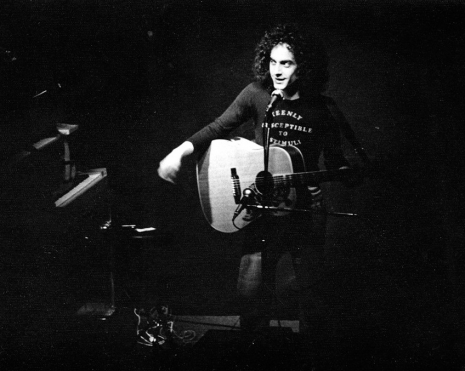
Richard became a fixture of the weekly open mic night at the Troubadour, then the hottest venue for singer-songwriters. After one such a set at the club, he was approached by an impressed member of the audience, Sam Weatherly, who became Richard’s manager and producer. Weatherly paid for demo sessions, which enabled Richard to record studio-quality versions of the songs he had been writing. For a session that took place at Sunset Sound, Weatherly brought in a musician by the name of George Clinton to play piano on a few tracks. Yep, theGeorge Clinton.
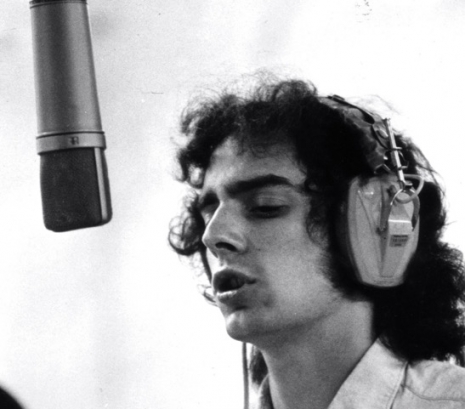
Weatherly, who was older, “wasn’t just my manager,” Richard says today. “He was like a parent.” Richard would head over to Weatherly’s house often to have dinner, watch football, or play the board game Risk. Weatherly and his wife were like Richard’s west coast family.
In 1975, Richard recorded at the famed Sound City Studios. He’d actually recorded there a couple of years prior, and was invited back by one of the owners, Joe Gottfried. The engineer for the sessions, Fred Ampel, had taken on the managerial role in Richard’s career. By this time, Weatherly and Richard had drifted apart, though the circumstances are now unclear. Richard was thrilled to be recording again at Sunset Sound. “You knew you were in a very cool place.” Fleetwood Mac were right across the hall, and Lindsay Buckingham caught a playback of one of Richard’s songs, “Sinatra’s Car.” Buckingham expressed his admiration for the tune, noting that the bridge sounded Beatlesesque. He even lent a hand, overdubbing a bit of bass for a particularly tricky section of the track. “It was a thrill to watch,” remembers Richard. “He was ripped on pot but absolutely flawless on bass.”

Richard’s girlfriend at the time was temping at a law office that had clients in the music industry. She found out one client was a producer, so she asked Richard for a tape. A collection of Richard’s tunes—some home demos and a couple of the 1975 Sound City tracks—was assembled, and the tape was given to a lawyer at the office, who handed it to the producer. Richard never heard from the individual, but didn’t think much of it. He didn’t even know the producer’s name.
All the while, Richard was getting better gigs in other areas of showbiz, working his way up from a P.A. on game shows, to become a screenwriter in film and TV. He was moving away from music, though he would still play clubs at least once a month.

In 1981, Corey Bishop, Richard’s best pal and a singer-songwriter in her own right (she’s better known as Elyse Weinberg ), was flipping through the bins at Aron’s Records in L.A., when she came across an album featuring images of a young woman sitting in a photo booth. Liking what she saw, and as the album was just 10 cents, she took a chance on it. Once home and listening to the record, Corey recognized the singer’s voice. She immediately called her closest friend. “Rich, this sounds like you,” she said, holding the phone up to the stereo speaker. “That is me,” Richard replied. “What the hell do you have there?”
), was flipping through the bins at Aron’s Records in L.A., when she came across an album featuring images of a young woman sitting in a photo booth. Liking what she saw, and as the album was just 10 cents, she took a chance on it. Once home and listening to the record, Corey recognized the singer’s voice. She immediately called her closest friend. “Rich, this sounds like you,” she said, holding the phone up to the stereo speaker. “That is me,” Richard replied. “What the hell do you have there?”
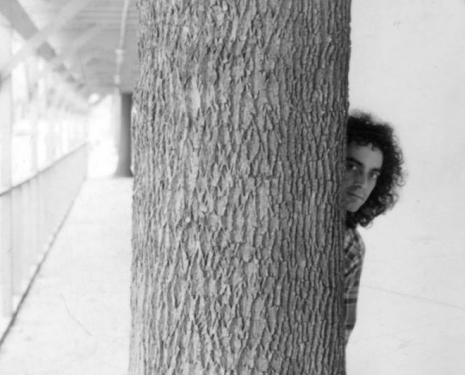
Baby Grand Records had released the LP containing Richard’s songs in 1977, yet had never asked for his permission, citing people he’d hadn’t heard of as the authors of his tunes, and leaving his name off the package entirely. They even changed the song titles. And then there was the final insult: The album was credited to a group dubbed “Almost Famous.”
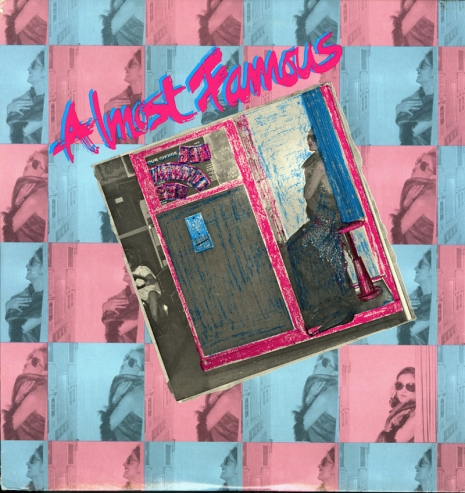
Feeling understandably wronged and knowing absolutely nothing about the mysterious record label that put out this album, Richard reached out to a contact at the Los Angeles Times. The paper picked up his story and published their findings in early 1982. It turned out Baby Grand wasn’t much of a record label at all—at least in the traditional sense. The Times’ investigation revealed that the company was part of a tax shelter operation.
Baby Grand Records was formed in 1977 by the Bowman Recording and Production Company, which was based in Atlanta, but also had an office in Los Angeles. Hugh Bowman II was the president of the company, and Bowman’s son, Hugh Bowman III, was also involved in the business. Bowman Recording invited investors to finance albums that would be released via Baby Grand, one of the labels under the company’s umbrella.
Baby Grand was unusual, in that it paid producers to create custom albums for investors, but also had no qualms about releasing records with music in which the provenance was unknown to them.
The Bowmans, along with other investors, put their money—estimated at $1.5 million—into 60 or so albums for the Bowman Recording and Production Company. The key to discovering who invested in Almost Famous lies in the “Made by special arrangement with” credit.
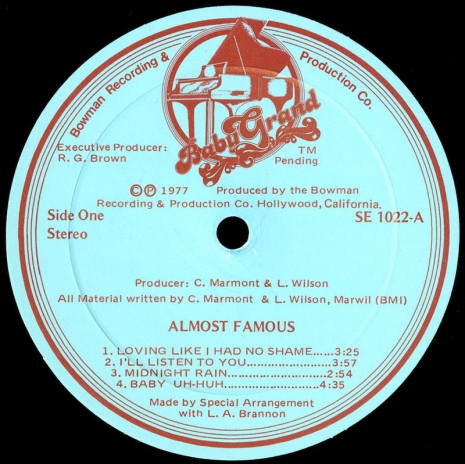
The identity of “L.A. Brannon” isn’t publicly known.
Rarely have the proprietors of tax shelter labels spoken publicly regarding their enterprises, but the Times managed to get an interview with Hugh Bowman III for their story. The younger Bowman was quoted as saying he liked to think of Baby Grand as a serious business, not a tax shelter, but Times reporters confirmed via multiple sources that that’s exactly what Baby Grand was. One such source was producer Robby Adcock, half of the partnership responsible for providing the tape of Richard’s songs to the Bowmans. Adcock’s cohort was another producer, Joe Long. Turns out, Long was the individual handed that cassette of Richard’s tunes in the mid ‘70s. Long’s name appears on a number of tax shelter releases, but not just on Baby Grand. Tiger Lily Records, the tax shelter label owned and operated by the infamous Morris Levy of Roulette Records, also issued albums that can be traced back to Joe Long.
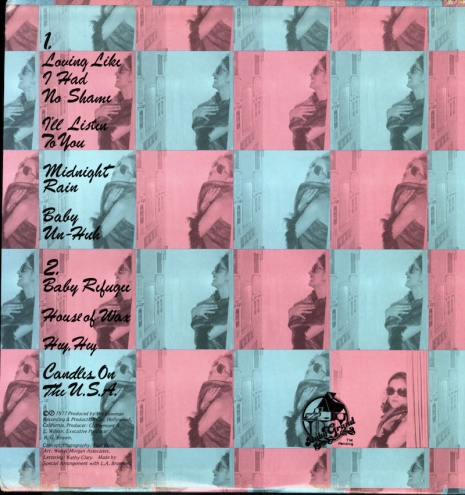
The back cover of ‘Almost Famous.’
The first two tracks on the Almost Famous LP were taken from Richards’ 1975 sessions at Sound City. The remaining four cuts were captured by Richard at home using a TEAC Sound on Sound reel-to-reel tape recorder.
The sophisticated pop of “Sinatra’s Car” brings to mind one of Richard’s biggest influences, Harry Nilsson, but it also resembles one of Paul McCartney’s reggae excursions. And Lindsay Buckingham was right: The middle section is pleasingly Beatlesque.
“Dancer,” the other Sound City recording, illustrates the dreamy singer-songwriter style of the period—until curve balls like, “Jesus ain’t the savior he used to be” are tossed up.
The folky “Change It All,” with hints of country and appealing blues imagery (“I’m blue like a lonely train”), is melancholy and gorgeous. Just as you’re holding back tears, you’ll get witty lines that are so darkly funny you’ll laugh out loud: “They’ll bury me next to Lesley Gore, so she’ll always be the girl next door.”
“Mary Grady” is named for the temp agency that occasionally employed Richard in the ‘70s. This Neil Sedaka-inspired number features moody verses that soar into the pop stratosphere for the choruses. “Mary Grady” is ridiculously catchy.
Though Richard was still in his twenties, “Rock N’ Roll Runaway” is seemingly written from the perspective of someone who’s already grown weary of the music industry. It also affirms his affinity for country rock.
“Hollywood Wax Museum” sounds like it could have been composed for a musical adaptation of Sunset Boulevard, but, at the same time, its biting whimsy is consistent with Richard’s yin-yang approach. The brevity of the track leaves you wanting more.
Tax shelter albums often feature a mix of unrelated recordings, and Almost Famous is no exception, as the final two songs on the album don’t feature Richard at all (there’s talk they were culled from a session commissioned by Baby Grand).
Incredibly, Richard got wind that there was a second version of the album. Baby Grand had paid for re-recorded sound-alikes, with another singer mimicking Richard’s vocal style. “It was terrible,” says Richard. “It wasn’t as if he was doing a really great Richard Goldman.”
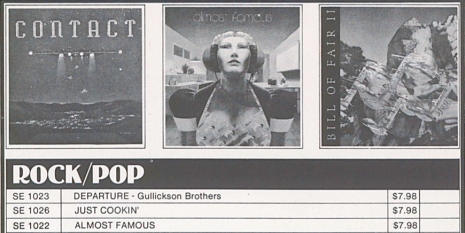
The second ‘Almost Famous’ as featured in a Baby Grand catalog, used as part of an attempt to sell (some might say “unload”) Baby Grand albums overseas in 1979-80.
Richard contacted lawyers about filing a lawsuit against Baby Grand, but was told the album would have to become a hit to get anything substantial out of the Bowmans. “You haven’t been harmed enough,” the lawyers said.
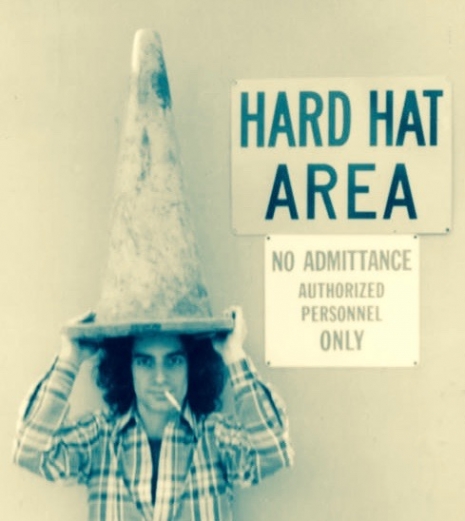
But, incredibly, the Baby Grand records actually led to Richard making money in the industry. By this time, an acquaintance of his, Ron Fair, was an A&R executive at RCA. Fair shopped around a couple of Richard’s tunes, and singer-actress Lisa Hartman ended up recording his new wave pop gem (in which the female protagonist is in love with a gay man), “Johnny’s Always on My Mind,” which was included on her 1982 LP, Letterrock. The track was later turned into a jingle for a jeans commercial. These developments resulted in Richard earning songwriting royalties for the first time.
The Ron Fair connection to this story runs even deeper. Fair was the producer, as well as a performer, on a number of the custom albums for Baby Grand, and during that period, he had even asked Richard if he wanted to play guitar on a session or two (Richard declined).
But that’s not the end of the Fair links. The copy of the Almost Famous LP bought by Richard’s friend was once owned by Ron Fair; after he got the job at RCA, Fair sold his collection of Baby Grand albums to Aron’s Records.
Ron Fair has gone on to become a known name in music, launching the careers of pop superstars Christina Aguilera and the Black Eyed Peas, amongst others. He had nothing to do with the creation of the Almost Famous album.
Even though Richard’s luck had changed with “Johnny’s Always on Mind,” that didn’t stop his drifting from the music business. In 1987, after a five year, self-imposed retirement from the stage, Richard emerged with a new set of tunes and began performing live again. His recordings started showing up on indie compilations, and in 1997, his debut (non-tax shelter) full-length, Girls N’ Cows was released.
was released.
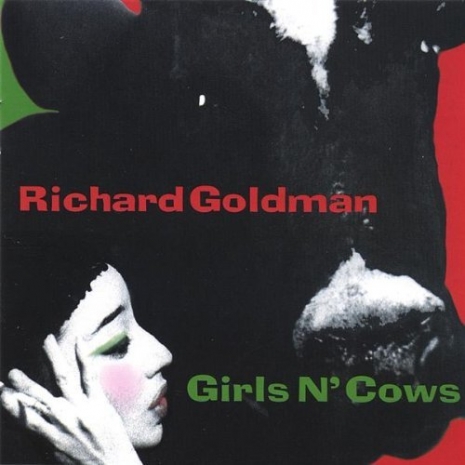
The Girls N’ Cows track, “The Prettiest Girl at the Funeral” is a perfect example of Richard’s songwriting artistry, effortlessly blending sardonic humor with sticky sweet choruses. Imagine if Elvis Costello could go back in time and record with Rubber Soul-era Beatles; it might sound something like this:
Richard received critical praise for the album—deservedly so—and toured the east coast, leading to an appearance on the NPR program, Mountain Stage.
Fast-forward to November 2012: As Richard was readying the release of his second album, and doing what we all do from time to time—Googling one’s own name—he landed on a review of an LP credited to “Gold.” On the album’s cover, he saw an image of his younger self staring back at him.
It had happened again.
More tomorrow on Richard Goldman—including his near-death experience in 2008—and “tax scam records.”
Until then, we’ll leave you with Richard’s appearance in the 1979 PBS documentary, La La, Making It in L.A. In the clip, he advises veterans of the music scene—in a way that’s thoroughly Richard—how to make it in the business.